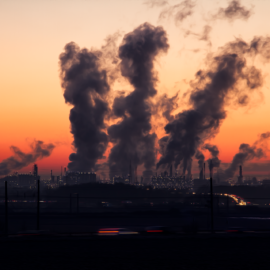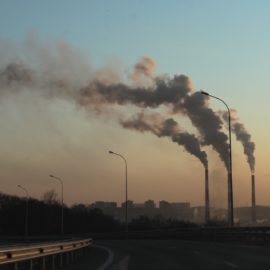
The head of the EPA made a visit and the chemical companies knew it.
EPA Administrator Michael Regan returned to Louisiana on Thursday in a trip that produced both symbolism and concrete steps, announcing proposed new rules aimed at reducing pollution at more than 200 facilities nationwide as he spoke in the shadow of a controversial chemical plant in St. John the Baptist Parish. The proposal is part of a push by Regan to address environmental justice issues and his visit followed another to the same area in 2021, his first year in office. Most of the plants that would be affected are located in Louisiana and Texas, home to some 50 and 80 respectively. A public comment period on the proposal will follow. The proposed rule changes target emissions of known or likely carcinogens, including chloroprene, ethylene oxide, benzene, 1,3-butadiene, and vinyl chloride, used in the manufacture of a variety of plastics and synthetic rubber materials. Regan, the first Black man to lead the U.S. Environmental Protection Agency, spoke near the Denka Performance Elastomer plant, the only one in the nation to produce chloroprene, classified as likely cancer-causing. The chemical is used in the manufacture of neoprene. According to the EPA, the new rules would cut toxic air emissions from chemical plants by 6,053 tons per year. The proposal would limit emissions of over 80 chemicals. “Today’s announcement is undoubtedly a game changer, especially for our children, who are among the most vulnerable,” Regan said. “As a parent of a nine-year-old, I can say with certainty that there is no higher priority for me than protecting the children of this country.”
nola.com
It will take a year but the wait is just what has been done for years.
Regan assured activists that the proposal could be finalized and approved by spring of next year. That follows the schedule outlined by a settlement agreement between the EPA and multiple environmental justice groups, including Concerned Citizens of St. John the Baptist Parish. Under the settlement, the EPA must put the final rule in place by March 29, 2024. “This is where people raise their families. This is where we recreate, this is where we live,” U.S. Rep. Troy Carter, D-New Orleans, said at the event, held along the border between LaPlace and Reserve. “It’s important that we continue to reduce emissions from these dangerous plants to improve quality of life in our communities, raise life expectancy, and lower the risk of cancer.” In 2014, the EPA found that five census tracts near the Denka plant had the country’s highest risk of cancer caused by airborne emissions. More generally, activists and some residents refer to the industrialized stretch along the Mississippi River between Baton Rouge and New Orleans, where Denka is located, as “cancer alley.” In a recent community risk assessment, the EPA found that the number of people with elevated cancer risk living near chemical plants could drop by up to 96% under the proposed rules. The proposal would also require facilities that make, store, use or emit the applicable chemicals to have air quality monitors at their fence lines, similarly to the way petroleum refineries’ emissions are monitored under the Clean Air Act.
It is telling that the only elected representative there was the democrat from New Orleans. Where were our senators and other representatives?
The EPA studied communities around 195 synthetic organic chemical plants across the country, comparing their risk of cancer associated with those chemicals to the risk of cancer to the nation as a whole. That analysis found that of the 9.3 million people living within 6 miles of the plants, 95,000 have a potentially elevated risk of developing cancer because of air containing toxics. The assessment also found that African Americans and poor people are more at risk since they often live near the facilities in greater percentages than other segments of the population. Separate from Thursday’s announcement, the EPA has warned the state that it may be violating civil rights laws due to Denka emissions. Denka said Thursday that the most recent report on cancer incidence published by the Louisiana Tumor Registry shows cancer rates in St. John Parish are among the bottom 25% of Louisiana parishes, and there are too few cases of the cancers alleged by EPA to be possibly linked to chloroprene to report in all of the parish’s census tracts. The company said it submitted to EPA in 2022 a “newer, more sophisticated model” for chloroprene exposure, which suggests Denka’s operations pose no increased risk of health effects. “The agency has so far refused to review and incorporate that model in its assessment of health risks related to chloroprene despite acknowledging it provides a more accurate understanding of risk because the chemical is not a ‘national or regional priority’ for risk assessment,” the company said. “We believe it is critical the best available science is used to protect human health and the environment. The people of St. John the Baptist Parish deserve current and accurate scientific information regarding health risks in their community,” said Jorge Lavastida, Denka’s executive officer and plant manager.
If reduced by 85% imagine what it was before.
Since taking over neoprene production at the site in late 2015, Denka said, it has reduced the plant’s chloroprene emissions by more than 85%. A spokesperson for the Louisiana Department of Enviromental Quality said the agency had no comment on EPA’s proposal because it was still being reviewed. The Louisiana Chemical Association did not immediately responded to a request for comment. Community activists expressed relief at Regan’s actions. “We’ve been fighting for almost seven years,” said Tish Taylor, 59, of activist group Concerned Citizens of St. John the Baptist Parish. “The EPA found all of these things that caused them to send that letter of concern. The evidence is there, and this administrator made that happen.” The EPA will accept written comments for 60 days after the proposal is published in the Federal Register and will hold a virtual public hearing. The Agency also will hold a training for communities on April 13 to review the proposal and answer questions. More information on the proposed rule and the EPA’s next steps in finalizing it can be found here.
This cleans up their air but also ours as the wind blows.



